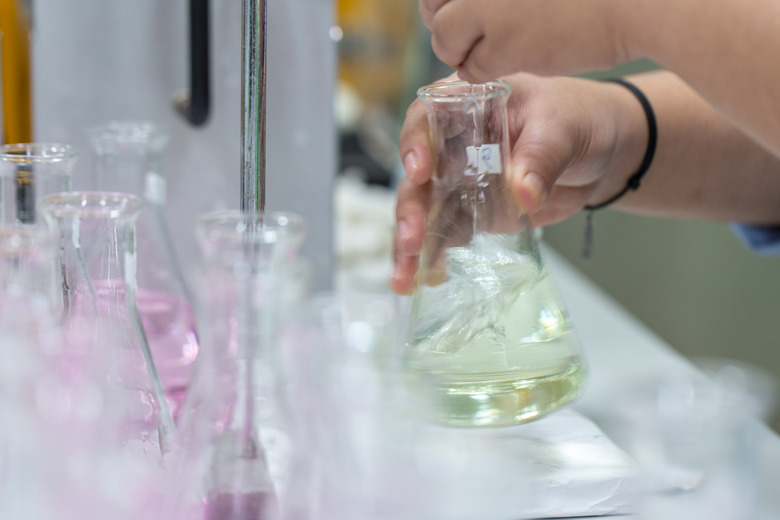Definition Of Endpoint Titration
Titration measures the concentration of an unknown solution that reacts with a solution of known concentration. The process is often used to check the purity of synthesized chemical compounds, such as pharmaceuticals. The ideal point for the completion of titration is known as the equivalence point. The end point demonstrates the equivalence point, typically by some form of indicator. For example, with a color indicator, the solution changes color when the titration reaches its end point.
TL;DR (Too Long; Didn't Read)
The completion of a titration is the end point, detected by some type of physical change produced by the solution, such as a color change. The end point typically comes straight after the equivalence point, which is when the moles of a standard solution (titrant) equal the moles of a solution of unknown concentration (analyte), i.e., the ideal point for the completion of titration. In a perfect titration, the end point and equivalence are identical.
Scout Titration
Scout Titration
The known solution is the titrant. This is added from a buret to a known quantity of the analyte, the unknown solution, until the reaction is complete. When you know the volume of titrant added, you can determine the concentration of the analyte. A titration should be carried out carefully to achieve the most accurate results.
Before the actual titration, carry out a scout titration to give you a rough idea of how much titrant you require. Use a pipet to add a known quantity of analyte to a flask. Record the initial buret reading, then add titrant from the buret to the flask. At the same time, stir manually or with a magnetic stir plate. When the end point is seen, record the final buret reading and calculate the titrant quantity required to reach the end point.
Titration Process
Titration Process
For the actual titration, set up the same way as for the scout titration. Record the initial buret reading and estimate the end point reading. Add titrant from the buret to the flask, stopping about 1 ml before your estimated end point reading. Rinse the walls of the flask with a small amount of distilled water. Continue adding titrant to the flask, one drop at a time until you reach the end point.
Acid-base Titrations
Acid-base Titrations
One of the most common titration, an acid–base titration determines the concentration of an acid or base by exactly neutralizing the acid or base with an acid or base of known concentration. You place the acid in the buret and the base in the flask, or vice versa. The buret solution is dripped into the flask until neutralization is reached, as shown by a pH indicator. At this point, the titration is complete.
Cite This Article
MLA
Gillespie, Claire. "Definition Of Endpoint Titration" sciencing.com, https://www.sciencing.com/definition-endpoint-titration-5172167/. 15 May 2018.
APA
Gillespie, Claire. (2018, May 15). Definition Of Endpoint Titration. sciencing.com. Retrieved from https://www.sciencing.com/definition-endpoint-titration-5172167/
Chicago
Gillespie, Claire. Definition Of Endpoint Titration last modified March 24, 2022. https://www.sciencing.com/definition-endpoint-titration-5172167/
